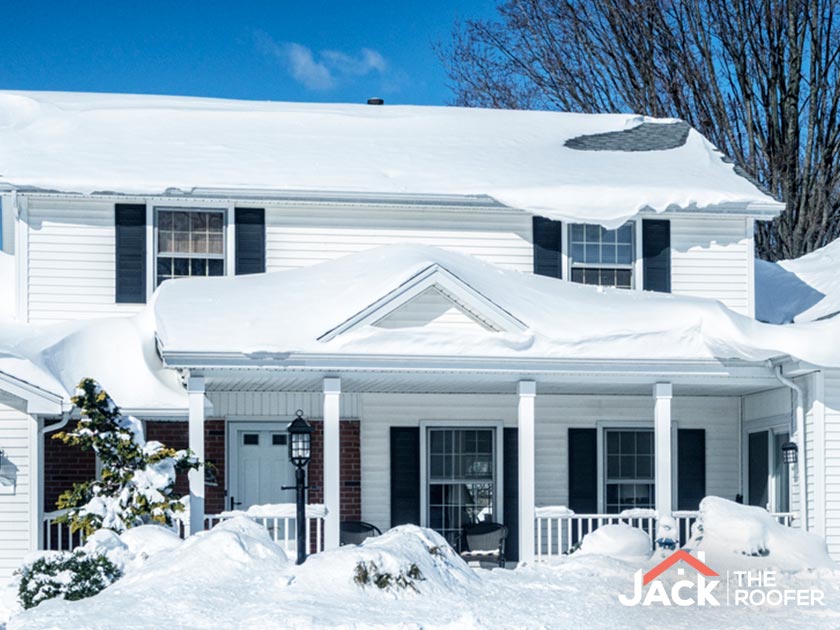Not all “roof leaks” are actually roof leaks. There are three common types of “leaks”, particularly in winter.

1. Rain – If your roof is leaking when it rains, this is probably due to damaged shingles. An old roof can sustain damage more easily than a new one. It’s also possible for a relatively new roof to leak when it rains, but that’s almost certainly a workmanship issue. Even if there are no holes in your roof, there might be leaks coming from penetrations where flashing is damaged or loose. A professional roofer can easily determine these external roofing problems.
2. Ice dams – If your attic is not insulated enough or if the ventilation system doesn’t work properly, it will become too hot. This will melt snow at the top. The melted snow will flow to the edges where temperatures are much lower, freezing there. This ice dam will force more flowing water to back up and enter your shingles from underneath, leading to a leak. A proper roof inspection can solve this problem, but it probably won’t be cheap.
3. Condensation – This is the kind of leak that isn’t really a leak. It just means there is frost or condensation building up in your attic. There are no holes in the shingles, and this is typically not a workmanship issue. This means your attic needs more insulation and ventilation. Heated air shouldn’t escape to your attic, and moist-rich air should be allowed to escape.
You can notice some signs that there is condensation, and your roof is not really leaking.
Condensation on Windows and Skylights
If you notice condensation forming on your skylights and windows, this might mean humidity is wreaking havoc somewhere in your home. Your walls, attic or floors might be affected already. This is dangerous because it can lead to mold and mildew growth as well as rot and corrosion. Call your roofer immediately.
Roof Sheeting Condensation
The roof sheeting in your attic might be harboring frost when it’s really cold. The frost will begin to melt as temperatures go down. You might think your roof is leaking then. Your lights and ceiling might show the first sign of a “leak”.
You can do something about condensation in your home:
- Install exhaust fans in your home’s wet areas, such as the bathrooms, the laundry room and the kitchen.
- Make sure to discharge dryer vents outside your home, not into your attic.
- Use a dehumidifier to keep the indoor humidity at normal and acceptable levels.
- Open your fireplace damper.
- Ventilate the crawl spaces and your basement.
- Keep your attic properly ventilated and add some insulation. Make sure the insulation is not wet and no blown-in insulation is blocking the vents.
- Never cover your attic vents during winter. Allow the moist air to escape.
Get in touch with Jack the Roofer, a trusted roofer company. Call us today at (720) 722-2255, or contact us here. We work with Denver and Parker homeowners.

